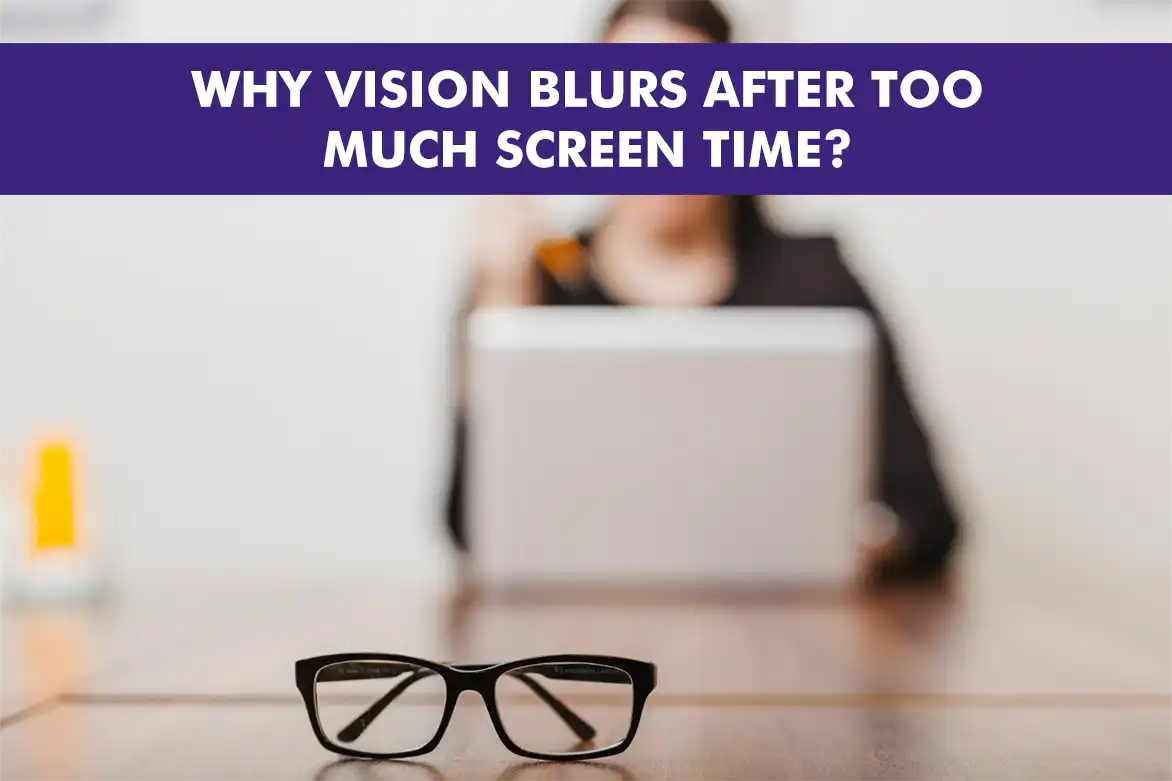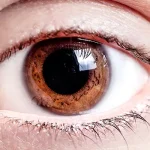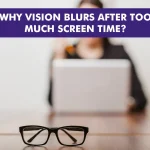In today’s digital age, screens are an integral part of our daily lives. From work to entertainment, we find ourselves staring at computers, tablets, and smartphones for extended periods.
While technology has brought numerous conveniences, it has also introduced new health challenges. One common issue is blurry vision after prolonged screen time. In this article, we will explore the causes, symptoms, and remedies for eye strain from computers.
Causes of Blurry Vision After Screen Time
Blurry vision after spending extended periods in front of a screen is frequently attributed to a condition known as digital eye strain, or computer vision syndrome. This is a prevalent issue in our technology-driven world. Several factors contribute to the onset of digital eye strain, including:
- Poor lighting conditions in the environment, which can cause the eyes to work harder to see clearly.
- Glare on the screen, which can be distracting and make it difficult to focus on the content.
- Improper viewing distances, where the screen is either too close or too far, leading to strain as the eyes attempt to adjust.
- Uncorrected vision problems, such as nearsightedness or farsightedness, which can exacerbate the strain on the eyes.
The Science Behind Digital Eye Strain
Digital eye strain is a condition that arises when our eyes are subjected to excessive stress due to prolonged periods of staring at digital screens, such as those on computers, tablets, and smartphones. This strain occurs because our eyes must exert extra effort to focus on the pixelated images displayed on these screens. The constant adjustment and focusing can lead to muscle fatigue in the eyes, causing discomfort and tiredness. Moreover, digital screens emit blue light, a high-energy visible light that can penetrate deep into the eye. This blue light is known to interfere with our natural sleep patterns by disrupting the production of melatonin, the hormone responsible for regulating sleep. As a result, individuals may experience difficulty falling asleep or maintaining restful sleep. Furthermore, extended exposure to blue light has been associated with potential long-term damage to the retina, the light-sensitive tissue at the back of the eye, which can lead to more serious vision problems over time.
Common Symptoms of Vision Blur from Screen Time
Individuals experiencing digital eye strain may notice blurred vision, where objects appear out of focus and unclear. They may also suffer from dry eyes, characterized by a lack of sufficient moisture and lubrication on the eye’s surface. Headaches can occur due to the constant strain and effort required to focus on screens. Neck or shoulder pain might develop from poor posture or tension while using digital devices. Difficulty focusing can manifest as trouble maintaining clear vision on the screen or shifting focus between distances. Increased sensitivity to light, or photophobia, can make bright lights uncomfortable or painful. Lastly, a feeling of heaviness in the eyes can result from fatigue and overuse, making the eyes feel tired and weighed down.
Long-Term Effects of Prolonged Screen Exposure
While many symptoms associated with digital eye strain are often temporary and may resolve with rest or reduced screen time, there are more serious issues that can arise from prolonged exposure to digital screens. One of the primary concerns is the development of chronic dry eyes, a condition where the eyes do not produce enough tears or the right quality of tears to keep the eyes lubricated. Additionally, the blue light emitted from screens poses a risk of potential damage to the retina, the light-sensitive layer at the back of the eye. This damage can have long-term implications for vision health. Furthermore, there is increasing evidence suggesting that extended screen time can significantly contribute to the development of myopia, or nearsightedness. This is particularly concerning for children and young adults, whose eyes are still developing and may be more susceptible to changes in vision due to excessive screen use.
Effective Remedies for Digital Eye Strain
There are several remedies to alleviate the symptoms of digital eye strain. Taking regular breaks using the 20-20-20 rule (every 20 minutes, look at something 20 feet away for at least 20 seconds) can help reduce eye fatigue.
Using artificial tears to keep the eyes moist, adjusting screen brightness, and reducing glare with an anti-glare screen cover are also effective measures.
Practical Tips to Reduce Eye Strain
- Ensure your workspace has proper lighting to minimize eye strain.
- Position your screen to avoid glare from windows or lights.
- Keep your screen at an arm’s length away and at eye level.
- Consider using computer glasses with blue light filters.
- Make a conscious effort to blink more frequently to maintain eye lubrication.
When to Seek Professional Help
If symptoms of digital eye strain persist despite taking preventive measures, it is important to seek professional help. An eye care professional can perform a comprehensive eye exam to rule out any underlying conditions and provide personalized recommendations.
Persistent issues may require specialized treatments or corrective lenses designed to alleviate digital eye strain.
Conclusion
Blurry vision and eye strain from prolonged screen time are common issues in the digital era, but they can be managed with proper care and preventive measures.
By understanding the causes and implementing effective remedies, you can protect your eyes and maintain good vision health despite the demands of modern technology.
FAQs
Computer Vision Syndrome (CVS) refers to eye discomfort and vision issues resulting from prolonged screen use. Symptoms include eye strain, headaches, blurred vision, and neck or shoulder pain.
Digital eye strain usually lasts as long as screen exposure continues. With proper rest and eye care, symptoms typically improve within a few hours.
Blurry vision from screen time is usually temporary and improves with rest, but prolonged strain without breaks can increase the risk of long-term eye issues.
Yes, blue light from screens can contribute to eye strain by causing digital eye fatigue, especially during prolonged screen exposure.
It’s recommended to follow the 20-20-20 rule: every 20 minutes, look at something 20 feet away for at least 20 seconds.
Yes, eye exercises like focusing on distant objects, blinking often, and doing eye stretches can help relieve strain.
Yes, prescription glasses with blue light filters or anti-glare coatings can reduce digital eye strain for screen users.





